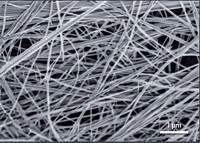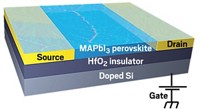×
CEN's 2020 Trailblazers
Frances Arnold: Directed-evolution pioneer
Carolyn Bertozzi: Glycoscience revolutionary
Samantha Du: Setting new standards for biotechs in Asia
Naomi Halas: Nanotech guru
Paula Hammond: Drug-delivery maven
Yamuna Krishnan: Developing DNA nanodevices to track and fight disease
Olga Malinkiewicz: Making good on the promise of perovskites
Mariana Matus: Combating the opioid epidemic with wastewater data
Kiran Mazumdar-Shaw: One of the world’s most powerful businesspeople
Erika Milczek: Replacing banned chemicals in consumer products
Amy Prieto: Building a better, safer battery
Sarah Richardson: Engineering wild microbes to produce useful chemicals
Amy Ripka: Taking a new approach to drugging neuro diseases
Cristina Sáenz de Pipaón: Trapping carbon dioxide with innovative membranes
Miranda Wang and Jeanny Yao: Aiming to make high-performance treasure from plastic trash
The women of CRISPR
Keeping up with Jennifer Doudna
Entrepreneurship 101: Jennifer Doudna’s top tips for success
Behind the scenes: Learn more about how we produced this issue
Advertisement
Grab your lab coat. Let's get started
Welcome!
Welcome!
Create an account below to get 6 C&EN articles per month, receive newsletters and more - all free.
It seems this is your first time logging in online. Please enter the following information to continue.
As an ACS member you automatically get access to this site. All we need is few more details to create your reading experience.
Not you? Sign in with a different account.
Not you? Sign in with a different account.
ERROR 1
ERROR 1
ERROR 2
ERROR 2
ERROR 2
ERROR 2
ERROR 2
Password and Confirm password must match.
If you have an ACS member number, please enter it here so we can link this account to your membership. (optional)
ERROR 2
ACS values your privacy. By submitting your information, you are gaining access to C&EN and subscribing to our weekly newsletter. We use the information you provide to make your reading experience better, and we will never sell your data to third party members.
Solar Power
Amazing Women
Olga Malinkiewicz wants to make good on the promise of perovskites
Her company, Saule Technologies, has a low-cost process to print the solar cells on a multitude of materials
by Laura Howes
March 8, 2020
| A version of this story appeared in
Volume 98, Issue 9

Credit: Saule Technologies
Malinkiewicz examines one of Saule Technologies' perovskite modules.
Vitals
➤ Title: Chief technology officer and vice president, Saule Technologies
➤ Funding: $15.4 million (about 70% in grants)
➤ Investors and funders: European Research Council, European Regional Development Fund, Huis Ten Bosch, and Poland’s National Center for Research and Development
Olga Malinkiewicz was sitting in a meeting with investors earlier this year when it hit her just how far her company, Saule Technologies, has come. Her colleague was presenting a short status report on Saule’s production facility, set to output its first products later this year. Since the firm’s founding in 2014, “we worked so much that I never had time to think about [our progress],” Malinkiewicz says, “but when you step back and see it from a distance, it is crazy, crazy fast.”
Based in Warsaw and Wrocław, Poland, Saule aims to commercialize thin, flexible perovskite solar cells that can be affixed anywhere that heavy, crystalline silicon panels can’t, like on curved surfaces and portable devices. Becoming an entrepreneur was not something Malinkiewicz ever thought she would do, she says, but a series of fortunate events has led her here.
Career Ladder: Snapshot
1982
Olga Malinkiewicz is born in Poland and grows up there with her family.
2005
She completes a bachelor’s degree in physics at the University of Warsaw and then travels to Barcelona, Spain, for a master’s in photonics at the Institute of Photonic Sciences.
2011
Malinkiewicz starts her PhD on organic photonic materials with Henk Bolink at the University of Valencia. “I still miss Valencia,” she says.
2013
At a conference, Malinkiewicz sees a perovskite solar cell that converts sunlight to electricity with 10% efficiency. She rushes back to her Valencia lab and, by the end of the year, publishes her work on titanium oxide–free perovskite cells that can be processed at lower temperatures and deposited on flexible substrates.
Today
After winning the Photonics21 contest organized by the European Commission in 2014, Malinkiewicz teams up with two business partners and moves back to Poland to start Saule Technologies. “Setting up this company was a 24 h job,” Malinkiewicz says. Today, with over 40 staff, Saule is preparing to launch its first products.
Saule arose from a discovery made by Malinkiewicz during her PhD studies at the University of Valencia that reduced the processing temperatures of perovskite solar cells, allowing them to be added to flexible substrates.
Perovskite solar cells use submicrometer-thick layers of a semiconducting material with a perovskite crystal structure that can harvest light and generate electrical power. They have received a lot of attention because of their low cost and ease of fabrication, according to physicist Alison Walker at the University of Bath. Walker leads a network of perovskite academics and industry researchers, of which Saule is part. When scientists first tested perovskite cells in the lab in the early 2010s, Walker says, the cells had power efficiencies of a few percent, but since then, their efficiencies have “rocketed.”
When those first perovskite cells were being tested, Malinkiewicz was at the University of Valencia, researching organic solar cells. That all changed in 2013, when she attended a conference where something exciting caught her eye: perovskites. “That was the end of my organic self,” she says. The scientist returned to the university and switched the focus of her research. But her group lacked equipment like high-temperature ovens to process titanium oxide, used as a support and charge-carrying material in perovskite cells. So Malinkiewicz played around with changing the architecture of the cells, applying what she’d learned from organic solar cells to sandwich the perovskite material between layers of charge-carrying organic semiconductors. The change in architecture enabled her to make perovskite cells at lower temperatures (Nat. Photonics 2013, DOI: 10.1038/nphoton.2013.341). “And that completely changed the picture,” Malinkiewicz says, because it enabled solar cells to be built on different substrates for custom applications.
In 2014, Malinkiewicz won the European competition Photonics21 and had press and investors knocking on her door. Eventually she found two business partners to team up with and moved back to Poland, where she was born, to launch Saule. “I had this feeling that this is the train and I needed to jump into the train or it will never, ever come back,” Malinkiewicz says. Today, Saule has over 40 staff members and has developed a process to manufacture low-cost, customizable solar cells by inkjet printing perovskite films onto various materials.
The business plan, Malinkiewicz explains, is simple. “We are concentrating right now on small devices,” she says. Saule wants to sell to manufacturers solar cells that can be integrated into smaller electronics, with the goal of expanding to larger devices later. “We want to do it step by step,” she says.
In the meantime, Saule has partnered with construction company Skanska in Europe and the Henn na Hotel in Nagasaki, Japan to install small solar modules on their buildings. These real-world demonstrations and measurements have helped Saule show that its material works outside the lab and helped build contracts and agreements for the future.
Malinkiewicz admits she has more ideas than she has time to implement. As an outlet for her ideas, in 2017 she helped launch the Saule Research Institute to explore next-generation technology. This is the place, she says, “to be a little bit more crazy and diverse.”
To What behavior or personality trait do you most attribute your success?
"I think my special power is having a lot of luck and meeting good people on my way."
Chemical & Engineering News
ISSN 0009-2347
Copyright © 2024 American Chemical Society





Join the conversation
Contact the reporter
Submit a Letter to the Editor for publication
Engage with us on Twitter